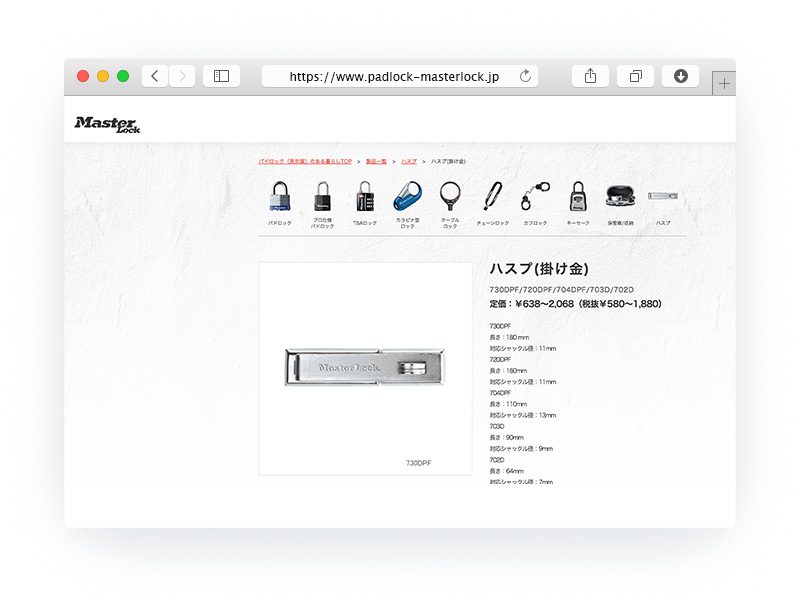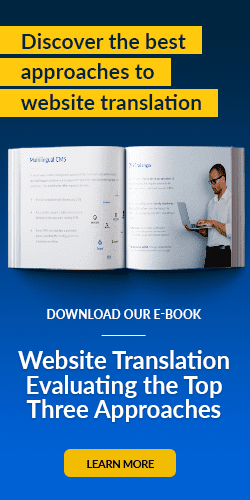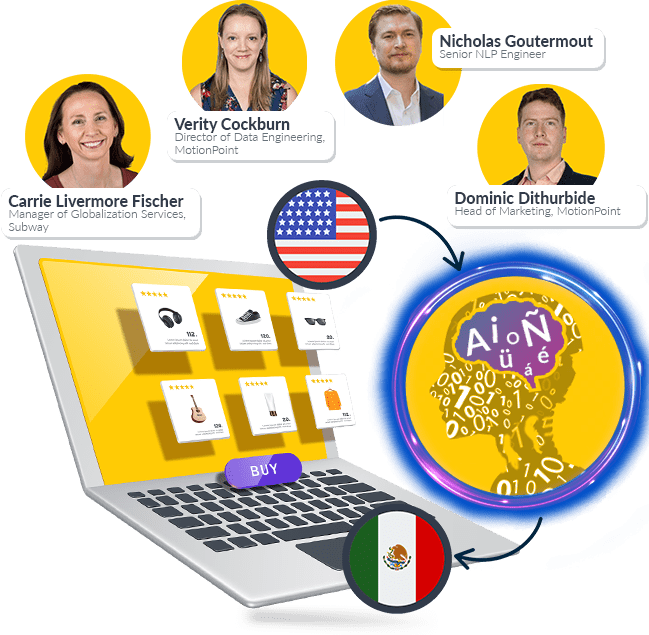To reach new global markets, it is critical to translate your website (updated link) to communicate with new customers in their preferred languages. Website translation alone will attract customers, but you’ll need both translation and localisation to create genuine connections that lead to conversions.
What is the Difference Between Translation and Localisation?
People often use the terms "translation" and "localisation" interchangeably. Both techniques help you communicate your website content, product, business, or services to potential clients. Without knowing how to "speak" your audience's language, both literally and figuratively, how can you successfully reach them?
While translation and localisation offer similar functionalities, there are essential differences between them. Understanding what distinguishes these terms, processes, and services, helps you extend the reach of your website more efficiently and profitably. To understand how website translation and localisation services differ, you need to define the two concepts.
The concept of website translation is very straightforward. Website translation is the process of adapting your website content from its original language into other languages, often word-for-word, to make it accessible to global customers. Translated content mirrors the style and tone of source content but doesn’t consider the context.
[Button: Learn About MotionPoint’s Website Translation Services]
Website localisation services go beyond a word-for-word translation experience. It involves refining website content through culture, language, and flow to provide users with the most valuable and relevant experience. Localisation considers language dialects used in a target region or country and adapts all website content elements for local or regional consumption. The localisation method modifies the language and website elements to appeal to the linguistic and cultural preferences of the target customers.
There are several elements of website localisation that are important to consider when deciding how to develop a multilingual website:
- Language and regionalism allow content to speak closely to the target audience. For example, suppose certain phrases or concepts are specific to the country or region in which you're looking to do business. In that case, it's important to show customers you understand who they are and why they should engage in your business.
- Ease of navigation means users can immediately find the website content in their language and begin interacting with the website seamlessly.
- Cultural elements enhance the user experience and create a feeling of closeness with the target audience. Some examples of cultural content include:
- Colours, shapes, sizes, and styles
- Images, icons, and graphics
- Societal codes such as humour, etiquette, and symbols
- Societal values, relationships, and beliefs
- Transactional elements include functional content that customers rely on to navigate a website, understand products and services, and ultimately, do business on a website, including:
- Date and time formats, telephone numbers, and contact information
- Weights, measurements, and geographical references
- Language and linguistic content, product descriptions, and reviews
- Communication elements that build trust and help the customer understand that they are valued:
- Local customer service information
- Legal information
While translation is one aspect of localisation, localising website content is a fundamental next step after translation. Therefore, the two concepts are important for multilingual website development, both as standalone concepts and together.
What is Transcreation?
Transcreation is a creative way of translating a message from one language to another. It keeps the same tone, style, and context, and makes sure the original meaning is not lost. The goal of transcreation is to recreate the message in a way that resonates with the target audience and maintains cultural relevance.
Transcreation is useful in advertising, marketing, and branding to adapt campaigns and slogans to different cultures and languages. Unlike traditional translation, transcreation allows more freedom in the creative process by using cultural research and adaptation to ensure that it is appropriate and relevant.
Why is Website Translation Important?
When travelling to another country, it’s helpful to know simple phrases in the local language such as "please," "thank you," and "how much". But if you weren’t fluent in the language, you probably became frustrated by your inability to communicate in other situations.
Your target market may face a similar challenge when interacting with your business online. They need a website that "speaks their language" so they can easily grasp what you're conveying. There's no room for frustration or confusion. If they experience friction, they'll often leave your site before converting.
Websites presented in local languages yield better market responses than those that aren't. According to Common Sense Advisory, nearly 73% of customers prefer to purchase a product or service from a site that provides information in their own language, and 56% of consumers said the ability to obtain information in their own language is more important than price.
So, why should you localize your website? In a nutshell, while translation is vital, it will only get you so far.
Your global customers cannot experience friction when they visit your website. If they do, they'll abandon it.
You can use machine translation software like Google Translate to translate your website, but it is best to use human review when possible. People are still more effective at crafting and editing translations for accuracy and nuance than computer assisted translation systems.
Machine translation software like Google Translate has its advantages. It's easy to use and can translate less critical website content at a lower cost. But machine translation software does not have interpretative or cultural knowledge of language. It can translate content word for word but will not be able to customise for culture.
Google Translate also doesn’t create searchable, indexable versions of those translated pages, which is important from an SEO standpoint.
Localisation Increases Engagement
Website localisation goes beyond the word-for-word linguistic conversion of conventional translation and instead uses words and phrases that resonate within specific markets.
Region-neutral translations are very effective, but localisation is more persuasive to many multilingual customers.
For instance, consider the differences between the words "trousers" and "slacks." The terms are identical in meaning, but one resonates far better in the UK than in the United States.
But website localisation can go beyond word choice. Savvy marketers often customise their multilingual websites to highlight local holidays, celebrations, or customs. This illustrates fluency in a local market's culture, quickly generating customer trust.
Other examples of localisation include creating special promotions for specific markets or crafting unique, trust-building messaging to establish credibility in brand-new markets.
In the early days of serving a multilingual market, it was not uncommon for a company to be greeted with local skepticism. Local customers often wonder how committed a company is to the market and its needs. When brands use localised content, they don't appear opportunistic - they appear authentic.
Localisation Considers Format
Website translation technology does not consider the nuances of your chosen language, your website, app, or marketing content may present differently. Website localisation includes things like layout adjustment, reading technique, and word count.
For instance, certain romance languages like French and Spanish need about 30% more words than English to get the same message across. Conversely, Finnish actually requires 30-40% fewer words. Website translation only deals with the language, but localisation makes sure copy looks right.
Translation vs. Localisation: What's Best for Your Website?
At this point you're probably asking yourself: should I invest in translation or localisation for my website? Both options differ on a strategic level, so the answer may not be black and white. Simple translation may be appropriate for some content types in specific markets. Localisation is most often required for adapting highly emotive creative marketing content so it clearly resonates across regions.
Websites usually contain several content types, from marketing copy to legal and technical information and user-generated forum content. For reasons of efficiency and cost, consider which types of content require localisation and where you can simply ask for translation. Website translation and localisation help you connect with your target audience and reach them on a more personal level.
Translation alone can be helpful to address many people who speak the same language, even though they may originally come from different countries. Translating broadly enables readers to grasp messaging, regardless of their origin. This phenomenon frequently happens in the United States with people who speak the same language, such as Spanish.
While the U.S. has Spanish speakers from many different parts of the world, they embrace varying sets of cultural nuances, phrases, and dialects. In this case, a well-crafted, broader translation would purposefully avoid using regional phrases or words from any specific country and acknowledge the broader Spanish market in the localised, U.S. market.
Translation alone is a less expensive option. Some web pages or translation jobs are not so important that they require human translation. MotionPoint may use machine translation for one page and human translation for other, more important pages.
Localisation creates more cohesion, but it is more costly. Localisation also requires content verbiage translation upkeep and considers web design as well. That can include changing graphics or developing entirely new web pages, depending on the target language and cultural differences from the original website.
[Button: Get Started with Translating Your Website Today]
When Do You Need Website Localisation?
Localisation would benefit you most if:
- You offer a digital service or product that you want to expand into new markets
- Your product often requires updates that need to be shared in different languages quickly and efficiently
- Your target audience’s language requires diverse formatting
- You want to cater equally to all your customers, domestic and international
- You have a dedicated customer call centre in multiple languages
- Laws and regulations require you to translate content
- You have a low barrier of entry to expand into international markets
Examples of Website Translation and Localisation
MotionPoint looks at business needs and can tailor website translations or localizations (or, more often, the blending of both). Here are several case studies that highlight how the needs of a company can determine how a single website can develop into robust, multilingual websites to address customers and help businesses grow.
MotionPoint Success Stories
Localising for Manufacturers
Master Lock, a leading U.S. manufacturer of retail and commercial security and safety products, needed both website translation and localisation when they began expanding globally. Localised websites offer a true strategic value for Master Lock. Distributors and sales teams utilise the Master Lock website to gather product information for regional customers, and customers can also access Master Lock's comprehensive online product and service information. Additionally, Master Lock’s websites change regularly, based on frequent updates when a new product or segment is rolled out, so accurate translations are critical for the business. To date, Master Lock has translated and localised websites that are supported in Chinese Simplified, Dutch, French, German, Italian, Japanese, Portuguese, and Spanish.


Why Banks Need Website Translation
Rio Bank is a community bank with branches throughout the heart of Southern Texas, many of them near the Mexican border. Business was growing, but Rio Bank found they weren't getting adequate customer feedback important for marketing and customer service. When a customer survey was developed in Spanish and feedback increased sharply, Rio Bank quickly realized the need for better communication with their Spanish-speaking customers. So Rio Bank asked MotionPoint to translate their website and create an immersive, dual-language experience for all clients. Translating their website yielded increased customer satisfaction instantly, where more than 90% of their customers speak Spanish.
[Button: Help Your Business Grow Through Website Translation]


The Solution You Need Is Within Reach
To translate and adapt your company website for different markets, look for solutions that offer accurate translations and engaging localizations. Global success hinges on how you communicate in your customers' local languages authentically. If you ignore that difference, you’ll miss out on effective ways to optimise your web content for multilingual customers.
MotionPoint understands that publishing market-relevant localisation across multilingual websites is more challenging than it sounds. It requires powerful website translation technology to customise website code to present the appropriate localised content to the right customers. It demands translation-management technologies that easily publish, track, and update customised content.
It also requires world-class translators who are fluent in languages, cultures, and customs. MotionPoint helps your business find the solutions you need for anywhere you want your business to be in the world.
Last updated on April 19, 2023



